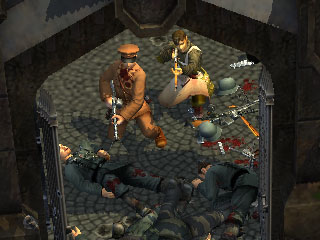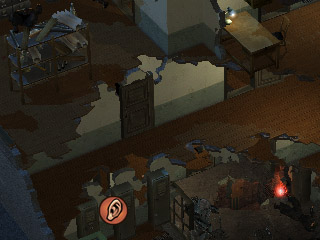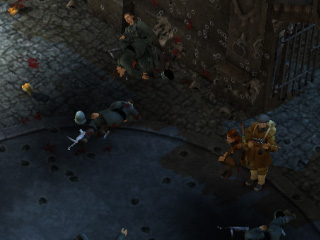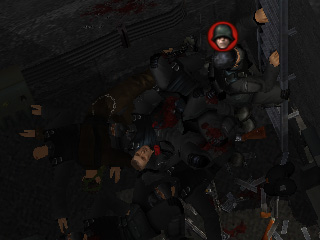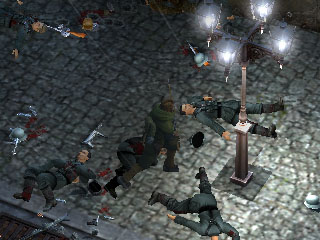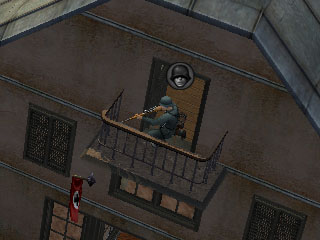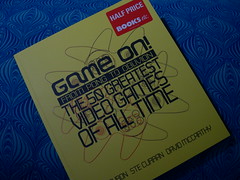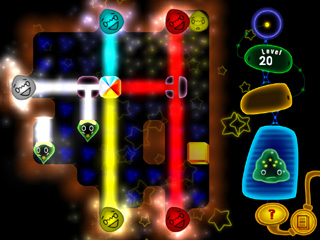Hello.
My name is Robin, and this is my website about computer games. Here you can find essays about old games, industry commentary, free games I've made for fun, and funny songs.
The whole situation is profoundly regrettable. I hope that there will be a way to salvage Gamespot‘s reputation and working environment before it’s too late, but it will require everyone involved to act quickly and cohesively to restore order before the damage can be addressed. Unfortunately I suspect that the person(s) at CNet who found themselves so embattled and out of their depth that they thought it would be a good idea to fire Jeff would be likely to continue to act in the same cowardly fashion. I hope I’m wrong.
There is a handy round-up of past and present Gamespot editorial staff reactions to the news here. Regardless of your opinion of Gamespot (I personally think that they are still better than pretty much any other site trying to cover the same remit, but recognise that they are not infallible), the people caught in the crossfire deserve our support.
UPDATE (06/12/2007):
A second official statement from Gamespot offers some reassurance. I guess we’ll see over the coming days and weeks what the impact if any will be.
Tags: cnet, commentary, gamespot, mistake
A couple of years ago I had the good fortune to meet Ron Gilbert at an informal “meet the fans” event in London. I asked if he’d ever thought about making the production notes and materials for the Monkey Island games available to the public. His reply (paraphrasing from memory) was:
“Arrr! But why? Who would be interested? So anyway, the secret-“
– which I have to say surprised me somewhat.
I’ve since found that this mindset is quite pervasive in the games industry. Attentions are always focussed on the next big thing, and once a game has shipped it’s assumed to be of no interest except as a historical curiosity. Any documentation made during the development process ends up getting trashed or mouldering away in a programmer’s bottom drawer somewhere. (Occasionally fragments do emerge – such as this excellent ‘Vision Statement’ by the designers of Planescape Torment.)
In many cases access to these materials would answer a lot of players’ questions, ranging from geeky points of trivia about characters and plot up to the rationale for major design decisions. Canny developers would also stand to benefit from swotting up – attempts to cash in on the success recapture the magic of well-loved games and genres would be improved if they sought only to retain the features and conventions that enrich the game, rather than the ones that were imposed by technical limitations or a lack or time.
It would also help to explode a lot of myths, especially among obsessive fans who assume that because a game has the name of a popular franchise on the cover, everyone involved in it’s development must have encyclopedic knowledge of (and unquestioning respect for) previous titles made years ago by people they may not have even met.
Part of the reason that the industry has developed such a cavalier attitude to historical preservation is a lack or resources to devote to a process which has no obvious commercial benefit. What’s needed is a repository for these materials maintained by parties who can dedicate the necessary time and effort to preserving and presenting them.
It’s quite common for universities to keep libraries of the notes and artwork created by authors, illustrators and film-makers, but until recently there didn’t seem to be any equivalent initiative for games developers. So I was excited to discover that earlier this year, the University of Texas announced that it was starting a Videogames Archive, with the involvement of Richard Garriott, Warren Spector and a raft of big-name developers and publishers.
Hopefully this archive will lead to similar efforts being undertaken in Europe and elsewhere, and will help to convince developers that there is some value in preserving and sharing these materials. In the mean time, you can donate (money or items – assuming you agree with the concept and how they’re going about implementing it, of course) to the University of Texas’s archive here.
Tags: commentary, history, ron gilbert, videogames archive
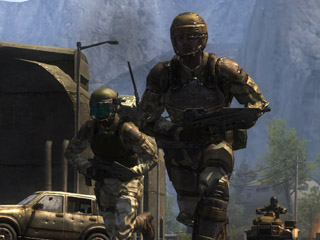
Spare a thought for us Windows 2000 users. I’ve been happily using the OS for close to five years, and have never had a pressing reason to upgrade to Windows XP (in fact, I prefer Windows 2000’s slightly more responsive UI and modest appetite for physical memory – not to mention the futuristic name). Until recently this has all been fine and dandy.
In spite of Windows 2000 being only about a year older than Windows XP (and in terms of functionality required for modern PC games virtually identical), publishers and developers are quietly starting to drop support for the system. That’s not “dropping support” as in putting a sticker on the box absolving themselves of responsibility if your computer explodes, but actively putting checks into games and installers to prevent Windows 2000 users even trying to play them.
Because Windows 2000 users are in a tiny minority these days (no exact figures exist, but a survey taken by Valve of Steam users suggests that they may now account for less than 1% of PC gamers), there hasn’t been a lot of outcry about games failing to run on it. There is also a lot of confusion over exactly how similar the operating systems are (a lot of gamers – and publishers – blithely assuming that there must be a technical reason for new games to be rendered incompatible, as had often been the case in the migration from DOS-based Windows 98 to NT-based Windows 2000 and XP), and the true motivations of some publishers for dropping support.
The most common reason for a game to fail to run on Windows 2000 is that once it’s been decided not to actively support an operating system, it’s easy to make small changes that accidentally break compatibility. There have been several occasions where users have been successful in fixing these minor incompatibilities, allowing the game to run flawlessly on Windows 2000. The most recent example is Enemy Territory: Quake Wars (developed by Splash Damage in conjunction with Id Software), a game that has the dubious distinction of shipping with support for Windows XP/Vista, Mac OS X and Linux, but not Windows 2000.
While the scenario described above is most common, a few instances of incompatibility seem to have been intentional, raising suspicion (warranted or not) about the practice in general. The most obviously deceptive example is Ensemble Studios’ Age of Empires III, a game which performs an operating system check at install time and refuses to install on Windows 2000 systems. If this check is circumvented (by using Microsoft’s own MSIEXEC utility), the game installs and runs without a hitch. It seems to be fairly obvious at this point (with similar backwards compatibility ‘miracles’ having been performed on various other games) that Microsoft have no compunction with trying to artificially force operating system upgrades on gamers.
The recent “Games for Windows” marketing program, while not explicitly stating that developers should not support Windows 2000, conveniently requires games to make API calls that are not supported by the OS. Again, most of the games affected by this have subsequently been modified to run on Windows 2000.
The only major exception to this is Relic’s Company of Heroes, which we can only assume does something so exotic under the hood that it genuinely needs Windows XP to run. We may never know for sure – in contrast to Splash Damage, who were quite open about the compatibility situation with ETQW (after initially being understandably wary that admitting the game would run on Windows 2000 might oblige them to offer technical support), Relic have consistently failed to address the issue, and prevent it from being asked about on their forums.
In light of this, even when I eventually do upgrade to Windows Vista (at some point in the next couple of years), I’ll be giving Relic’s games a miss. It would be unreasonable to expect developers to support old technology indefinitely, but at the very least we should expect to be told exactly why we’re not being given a choice.
More details on getting several other popular games to work on Windows 2000, after the ‘jump’.
Tags: commentary, etqw, windows 2000, windows xp
The topic of mobile games (by which I mean the more commonly understood definition of games played on mobile phones, rather than the whole spectrum of portable handheld devices) is one that I’ve become closely familiar with over the past few years, having been involved for an extended period in mobile publishing and development. I’ve avoided writing about them out of slightly paranoid concerns that it would be present a conflict of interest (I can hardly complain about corporate blogs if I start hyping/trashing my employers’/competitors’ products myself) but I think I’m now in a neutral enough position to be able to share some thoughts about the sector as a whole.
The two things that everyone knows about mobile games are that they’re going to be worth billions of dollars (the exact value and timeframe for this occurence varying depending on who you ask), and that they’re currently a bit rubbish. This second piece of received wisdom must surely be true as even prominent figures within mobile games biz (as well as armchair pundits who keep making the same game over and over) habitually complain about the lack of quality, or inherent shortcomings of the platform, as a preamble to their proposed ‘cure’ – which usually just so happens to involve the exact bit of technology or design philosophy their company specialises in.
This crisis of confidence needs to be addressed. It would be difficult to imagine the early PC game developers in the late 1980s and early 1990s (Id, Lucasarts, Origin, Sierra, etc.) offering up caveats about how the PC wasn’t really meant to play games, so they should be cut some slack. Nintendo and Sega didn’t draw attention away from the incumbent home micros in Europe by wringing their hands over their systems being uncompetitively priced and not being brilliantly well-suited to slower, keyboard and mouse based games. They just concentrating on making the best games they could with the tools available.
So, the first thing that the industry needs to do to establish mobile games as a legitimate gaming option is simple:
Stop telling people they’re crap.
The second thing may (also) sound a bit trite, but having read countless interviews with industry luminaries over the past two years where every other possible avenue is desperately explored (like the pub landlord who’ll gladly invest in fruit machines, garden heaters and karaoke rather than considering selling good beer cheaply), it bears repeating:
Make fun games and champion them.
Seriously. If you can’t get people who are already comfortable with the idea of paying money for computer games excited about your product, what chance do you have with the “expanded audience”? Nor are any amount of spangly 3D effects, community features, cross-platform wizardry or portability-exploiting gimmicks going to help if you’re still struggling to nail down the core gameplay experience.
Tags: commentary, mobile games
So, it turns out that Xbox 360s break down rather a lot. But then Microsoft quite unexpectedly decided to tackle the problem head on, putting measures in place to make sure that everyone who has seen or may see the dreaded “ring of death” error code (three red lights on the LED display on the front of the console, which indicates a problem requiring returning the box to the manufacturer) gets a fully working machine at no extra cost. Aside from the fact that I’ll have to mothball my plan to sell “Yours died too, huh?” t-shirts, this is a great result for all concerned.
I think that the warranty extension (as opposed to a full consumer recall) is probably the best that Microsoft could realistically expect to achieve at this point in time. Newsweek’s N’Gai Croal presents a well-reasoned analysis of the situation. Consumers deserve to have more information about exactly what’s wrong and how likely it is to affect them, not just some vague assurance that everything has been taken care of. Once the revised (65nm) chipset rolls out we’ll probably hear a more candid explanation of what happened. Until then, we get to marvel at the linguistic sleight of hand required to allow Microsoft to address the problem without admitting that there is a problem.
Tags: commentary, defective, peter moore, red ring of death, todd holmdahl, xbox 360
Earlier this month, the BBFC refused to give a rating to Rockstar’s Manhunt 2, effectively (and legally) banning it from sale in the UK. Shortly after that, the ESRB in the US awarded the game the kiss of death A-O classification, and Sony and Nintendo both reiterated their policies that they would refuse to grant a license for any A-O rated games to be released on their platforms.
Rockstar then announced that the game was to be put on hiatus, prompting many to speculate that the game would be edited and relaunched later in the year (and that this may even have been Rockstar’s intention all along – a theory which is rather far-fetched considering the level of risk and expense to which they would be -and in fact have been- exposed). Keith Vaz basked in the glow of victory for a few seconds before putting one of his clownshoe’d feet back in his mouth by calling for Resistance: Fall of Man to be banned as well, presumably on the basis that it was a game that he knew the name of.
Thus the issues of censorship and the social responsibility of publishers came under intense scrutiny for the first time since Hot Coffee. Now that the dust has settled, we have learned several things:
Tags: bbfc, commentary, manhunt 2
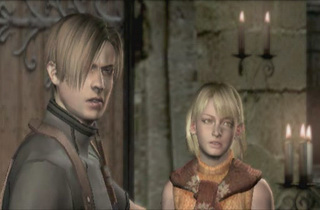
“Resident Evil 4, to sum up, is the best game on the GameCube.
But it’s not just the best game on the GameCube.
It’s the best game of this generation, it’s the best game-“It’s the best game.”
Robert Florence, Consolevania Series 1 Episode 7
It’s easy to be cynical. These days, when any moderately entertaining game with a big enough marketing budget is hailed as the Game of The Year, superlative-spattered reviews start to ring hollow after a while. Which makes it all the sweeter when a game like Resident Evil 4 comes along. Look the game up on Metacritic, and you’ll see review after review desperately trying to salvage some semblance of sober objectivity through the use of trepidatious and insincere qualifiers. “Best survival horror game”, “best GameCube game”, “one of the best”, “possibly” – no. It’s the best game. Even now, two years later, it’s fair to say that Resident Evil 4 still represents the state of the art.
Tags: best, capcom, Game, game title, gamecube, multiplatform, resident evil 4, what are ye sellin'?, wii
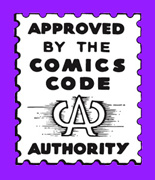
From a UK perspective, the voluntary age rating system used by games publishers in the US (the ESRB ratings) seems to be pretty badly broken. In the UK, virtually all commercial games are submitted to the PEGI rating system (which covers most of Europe with the exception of Germany, which has its own ultra-strict government-enforced system) which on the face of it seems analogous to the ESRB system. But games with overt violent or sexual imagery also fall under the jurisdiction of the British Board of Film Classification (BBFC), whose ratings are legally binding.
In practice (some early teething problems aside) this system seems to work very well. The BBFC icons are widely recognised by people who have no close knowledge of games, and retailers feel comfortable stocking adult-themed games without the fear of irate parents demanding to know who sold their little Johnny this sick filth. Meanwhile, games with innocuous content can carry PEGI ratings without incurring the delays and expense of the full BBFC treatment.
(In fact, someone should probably patiently explain the system to Keith Vaz, Rt. Hon. Member for Leicester East, who intermittently pops up in Parliament to trot out the latest Jack Thompson originated anti-games scare story, and to call for tighter controls which already exist.)
Tags: bbfc, comics code, commentary, esrb, hot coffee, pegi

And right on cue (erm, a month after my last post) here’s a great example of Microsoft’s games people sending the wrong message.
At some fundamental level Microsoft really don’t seem to ‘get’ Nintendo. Every console manufacturer likes to claim that they don’t consider the competition a threat. But even now, with the stratospheric, global, cross-demographic demand for the DS and Wii showing no signs of abating (with the Wii’s success – finally – turning into serious third party commitment), Microsoft are only just starting to grasp that it’s their lunch that’s getting eaten.
One executive in particular doesn’t appear to have updated his crib sheet of interview responses since before the Wii launch. Step forward Robbie Bach:
Tags: commentary, FUD, microsoft, robbie bach, wii
Shacknews have posted a very interesting interview with Alex St John, one of the key figures behind the DirectX initiative at Microsoft in the late 1990s and early 2000s.
He explains how the reasoning behind DirectX was to build a gaming platform that could be anchored to the Windows PC and thereby avoid being upset by radical shifts in hardware, something that would have seemed very important with the transition from DOS to Windows and the 16-bit consoles to the Playstation fresh in people’s minds. It also seems to chime nicely with my probably-obvious theorising about the ultimate aims of the Games for Windows initiative.
His comments on Windows Vista are surprisingly candid, but it should be pointed out that he is connected to WildTangent, whose game catalogue storefront application thing (preloaded on millions PCs by the main OEMs) stands to be more grievously affected by Vista’s paranoid security features and the pointless Game Explorer than typical boxed games.
I get some stick on some forums I frequent for being “anti-Microsoft”, because I tend to be cynical about their intentions. (Interestingly, a good proportion of the UK developers I’ve spoken to have similar views, which may be linked to the fact that most of them orbited the Amiga and PS1 for many years, rather than the PC and Xbox.) What these stick-wielders (who generally have names like MasterCihef2005 and xHAL0Rul3Zx) fail to appreciate is that when it comes to their involvement in gaming, Microsoft have both positive and negative traits, which aren’t always in equilibrium.
Tags: allard, commentary, directx, microsoft
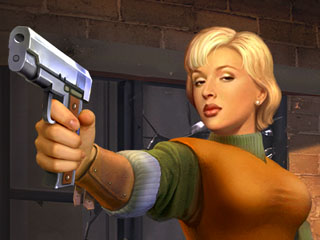
Silent Storm is a turn-based tactical combat game for the PC, in which the player controls an elite commando unit during an alternate universe World War II. (The fantasy setting becomes more obvious later in the game as the existence of various improbable experimental weapons is revealed.) The game was developed by Russia’s greatest PC games machine, Nival Interactive (Etherlords, Blitzkrieg, HOMM V) and released in 2003. The game takes the basic mechanics of turn-based squad games (as seen in Laser Squad, X-Com and Jagged Alliance) and grafts them on to a deeply physically simulated 3D environment.
The game’s major innovation is the completely destructible nature of the environment. Everything in the game (and this isn’t just limited to scenery objects or specially designated ‘weak’ walls) has material properties and can be destroyed with a sufficient amount of force. Destruction isn’t a binary state either. The game’s buildings are made up tile-based sections, which are further subdivided into individual pieces, so bullets and explosions can carve irregularly shaped holes in walls and floors.
This makes the idea of cover a relative concept. If you can hear someone on the other side of a wooden door, you can quite happily loose a hail of sub-machine gun bullets through the door in their direction (albeit with limited in accuracy). You can concentrate fire on part of a building to give your sniper a clear view of the goons inside. (Everything works on true line of sight.) Blast a big enough hole and your soldiers will naturally be able to clamber or crawl through it, so you seldom have to confine your route to the existing staircases, ladders and entry points.
The malleable nature of the world doesn’t just add to the gameplay, it is the gameplay. It sets Silent Storm apart from previous entries in the genre. One could easily imagine 2D games like Laser Squad or Jagged Alliance being implemented with miniatures and dice, but it would be impossible (or at least staggeringly impractical) to recreate Silent Storm’s design in this way.
The other distinguishing aspect of the game is the inclusion of what the developers call “RPG elements”. These essentially consist of a set of stats and a skill tree for each member of your squad. Characters aren’t constrained to their starting classes, so it’s possible to build up their stats in other areas without penalty. Apart from the ‘hero’ character (for whom the player can specify a name, face, voice, gender, nationality and starting class), the rest of your squad is recruited from a pool of predefined characters. Unlike Jagged Alliance, there’s no personality system preventing certain characters from working together or causing them to bear grudges.
The glue that holds the missions together is perfunctory but adequate. The campaign system adds new plot-advancing missions to the game map which can be tackled in any order. Completely optional random encounters also appear on the map, which can be useful for increasing your characters’ stats and gaining a little extra ammo and equipment, but are typically so short and simplistic that there’s not much point in opting to play them once you have a few of the main missions under your belt.
There are dozens of weapons and items available to equip your squad, which can be obtained in the field or from the generously stocked armoury at headquarters. There are at least 10-20 of each of the main weapon types (mêlée, pistols, rifles, submachine guns, heavy weapons, grenades) as well as loads of medical (bandages, forceps, morphine) and engineering (lockpicks, explosive charges, landmines) items. As well as the usual variables for each weapon (clip size, weight, power, firing speed, etc.) there’s also a stat for how easy the weapon is to learn. Individual characters gain greater familiarity with the weapons they use most often. Equipping a squad prior to entering a mission is quite engrossing and offers lots of scope to indulge obsessive-compulsive tendencies.
The range of skills and weapons available, combined with the level of detail in the simulation, affords the player an enormous amount of freedom in how they approach each mission, similar in design ethos to the Hitman games.
The game’s visuals still stand up well today. It’s true that even on modern hardware the engine feels a bit more sluggish than it should (especially compared to HOMM V, although it’s possible that the latter game is being asked to do fewer calculations) and the per-pixel lighting is frequently glitchy. The maximum resolution of 1152×864 pixels also takes the edge off a bit. Even with these shortcomings, the detail of the characters and environments is still pleasing. (For some historical context, the first time I saw an alpha of the game running in late 2002, I thought that the character models were prerendered – in the style of Commandos – until the camera was rotated.)
The particle effects and rich, hand-painted looking texture work (Nival’s visual trademarks) are typically excellent, as are the ragdoll deaths (quite a new development at the time). The scenes left in the aftermath of particularly eventful missions, of battle-scarred, semi-collapsed buildings strewn with corpses, are eerily reminiscent of the Chapman brothers’ Hell dioramas.
In spite of the brilliance with which the core gameplay is implemented, Silent Storm does have it’s fair share of shortcomings. The most glaring is that there are no multiplayer modes, a staple of the genre since the early days, and something which would seem easy to implement (at the very least offering hotseat or play by email).
Enemy turns can take an excessive amount of time (partly because their animations are played out at the normal speed when you can see them). On levels where there are several friendly AI characters and enemies engaged in battle, you can spend more time watching them duke it out than actually making your own moves.
The enemy AI also has some issues. Pathfinding (for enemies and the player’s squad) is handled excellently, but enemy characters lack much sense of self preservation or awareness, seeming happy to charge through doorways that are already littered with corpses of their comrades (as seen in the image above). They also seldom use stealth (although they tend to be absolute bastards on the rare occasions where they successfully ambush you) and don’t seem to be able to use grenades. Because of these problems (as well as the issues described at the end of this article), and the fact that it all does ultimately get a bit predictable, I would expect that most players would play the game until they reached a point where they’ve had enough, rather than fall victim to 100+ hour addictions.
Silent Storm is a game that unfortunately passed most people by on its original release. The game failed to find a wide audience thanks to a combination of bad timing, poor marketing and what at the time seemed like excessive technical requirements (especially for a strategy game). JoWooD (who were originally slated to publish the title) were in financial difficulties around that time, and sold off the publishing and distribution rights to various external parties.
The fact that the game was turn-based was considered a problem when it came to marketing. With the unstoppable rise of the RTS over the past decade, it has become extremely difficult to even get a turn-based game released, let alone to generate commercial and critical interest. In recent times only Nintendo (and to some extent Atlus) seem to have been able to buck the trend, with games like Advance Wars and Fire Emblem.
It’s disappointing that Nival haven’t built on the advances made by Silent Storm with a true sequel. (They did release at least one other game with the same engine, Hammer & Sickle, which seems to be an officially sanctioned mod.) It’s also a shame that there haven’t been any subsequent games in any genre that implement destructible environments as extensively. Destructible scenery in games is usually severely limited due to a combination of expense and time constraints, design issues (it becomes vastly easier for the player to break the game in ways the designers hadn’t anticipated), and historical technical reasons (most graphics hardware and APIs are primarily designed to optimise the rendering of static environments).
It occurs to me that turn-based tactical strategy games would be ideally suited for episodic delivery. Games like Front Mission and Faselei!, with a strong narrative focus, give a good idea of how a mission or mini-campaign could be packaged up as a stand-alone experience. It might not even be strictly necessary for the player to play through every episode in order, and they could carry over their characters and equipment from one episode to the next. (Obviously some balancing issues would be need to be addressed.) Replayability would be increased if there were secondary (or hidden) objectives and multiple ways to complete the mission.
Such a game would probably need well-written (and quite varied) characters to keep players interested. I’m not aware of any developer currently exploring this route (the most actively developed game in the genre today appears to be Laser Squad Nemesis, which focuses on multiplayer), but would be very interested to see how it could work.
Tags: Game, game title, nival, PC, silent storm, turn-based strategy
I don’t like the idea of ‘retro gaming’. That is to say, I don’t like using the term ‘retro’ to describe games released several years ago. It seems to imply that old games (encapsulated as a single monolithic entity) should be treated differently to newer games. This distinction comes from a misunderstanding of why people play old games. I play lots of old games and I’m not for a single second trying to ‘relive’ anything. I have no interest in nostalgia, I’m just aware that some old games haven’t aged badly in any important respect, and in a few cases haven’t been subsequently bettered either. Furthermore my ability to appreciate them (logically enough) hasn’t remained static.
The negative aspects of isolating old games cut both ways. It casts old games in an unnecessarily poor light by encouraging people (especially the OH SO WACKY NES T-shirt brigade) to focus on the technical limitations instead of the ingenuity with which developers tried to overcome them. It also suggests that good and bad decisions made in the design of crumbly old games have no relevance to our clearly much more sophisticated modern ones.
The upshot of this is that newer games often only compared to their contemporaries, mediocre games are reluctantly endorsed by reviewers, and developers make mistakes that were avoidable years before. (Trivial example: you’d think that by now everyone would know that mapping ‘up’ on the joystick to ‘jump’ was a big no-no, yet it still happens.) A good example of how constructing an artificial divide between old and new games can be counterproductive is this recent Eurogamer article.
Tags: commentary, eurogamer, retro, toejam & earl
Game On!: From Pong to Oblivion – The 50 Greatest Video Games of All Time
Simon Byron, Ste Curran and David McCarthy
Headline, £14.99
ISBN: 978-0755315703
This rather awkwardly titled volume is a slickly presented celebration of the best experiences gaming has to offer, as chosen by three veteran games writers (who these days can be found getting up to harmless mischief on their blog).
It isn’t, obviously, an uncompromising attempt to determine the 50 best games ever made. The authors don’t disguise the fact that the aim of the book is to present a catalogue of worthwhile gaming experiences that would be accessible to the mainstream reader. Each game is given 2-8 full colour pages, explaining the premise of the game (as well as other games in the series/franchise where appropriate) and what’s so good about it, as well as providing brief directions on how each game can be (legally) obtained and played. Each entry is lavishly illustrated with screenshots, artwork and concept art.
Tags: books, character design for mobile devices, game on, video games guide
In the interest of full disclosure, I should point out that I was connected to the development of this game, and although I do not stand to gain commercially from its success, my views are inevitably going to be subjective. Don’t consider this a review, just a gentle prod that this game exists.
PRISM: Light The Way (not to be confused with P.R.I.S.M. – Threat Level Red) is a 2D puzzle game for Windows PCs and Java-capable mobile phones published by Eidos and available to buy right now: [PC version] [Mobile version] – although oddly Eidos haven’t (to my knowledge) advertised the game’s existence in any way.
The story of the game (in so much as anyone cares about the story in a puzzle game) revolves around cute, stylised alien creatures that live inside a collapsed star and feed on the light rays that are slurped up by its event horizon. One day a space monster jams itself in their black hole (oo-er), blocking out the light and necessitating a race of do-gooding, light-spewing aliens come to the rescue. Of course, as none of these deep space creatures have limbs, the player (in the form of a disembodied cursor) must help them move around.
Tags: casual, eidos, Game, game title, mobile games, morpheme, multiplatform, prism, puzzle
A few weeks ago I visited the Game On Exhibition at the Science Museum in London. For those who want an in-depth description of what the show offers and the overall impression that the typical game-savvy visitor is left with, I can recommend the official site and this review by Duncan Lawson, which largely tallies with my own experience.
The exhibition’s greatest achievement is that the organisers have striven to make as many of the exhibits on display playable. They’ve convincingly solved the technical challenges of keeping over a hundred disparate consoles and computers up and running at the hands of the general public. During our visit there were maybe only two or three machines out of service.
Unfortunately this commendable effort is let down by the selection of games that the organisers have chosen. It’s no exaggeration to say that it this selection seems completely random. For each notable game there are at least half a dozen non-entities that could easily have been selected by blindly buying old cartridges at a car boot sale.
Stranger still, the skew of formats and genres borders on the perverse. No coinops post 1990. No RPGs. No mention of MMORPGs. Three PC games (all of which are ports and none of which are Starcraft, Doom, Quake, Ultima VII/UW/UW2, Deus Ex or Tie Fighter), two(!) Mega Drive games (again, completely bafflingly, both ports – forgettable versions of Sokoban and Prince of Persia), and one(!?) Amiga game (Lemmings). And most damningly of all (maybe), zero Master System games (they could have at least had Wonderboy III).
In fact most (or at least an extremely disproportionate amount) of the 100+ display machines were Nintendo consoles. Yes, OK, Mario Kart, very good, Goldeneye, no problem … but (SNES) Sim City and (NES) Elite? I thought that this anomaly might have something to do with the exhibition’s sponsor, but have heard that the lineup was largely the same in previous incarnations, so it must be the curators who are at fault.
Very little effort has been spent on trying to explain how everything fits together chronologically, or what makes any particular game notable (in terms of popularity, notoriety, innovation, influence, relevance to gaming in the UK, or any other criteria). There is also a heavy degree of censorship, which swiss-cheeses any attempt to present an accurate history of games post the golden age.
Even though we found most of the show to be a disappointment, we did glean some entertainment from Saturn Bomberman and Bubble Bobble, followed by a lengthy game of Buzz! against some MOTPs. And I got a nerdy kick out of ‘speedrunning’ HHGTTG (my experiences with the Infocom games are a story for another update) and seeing some original Steve Purcell artwork for The Secret of Monkey Island.
Hopefully the exhibition will get an overhaul before its next outing, as the seeds of an informative, entertaining experience are there. Until then, you’re not missing much.
Tags: disappointment, game on

